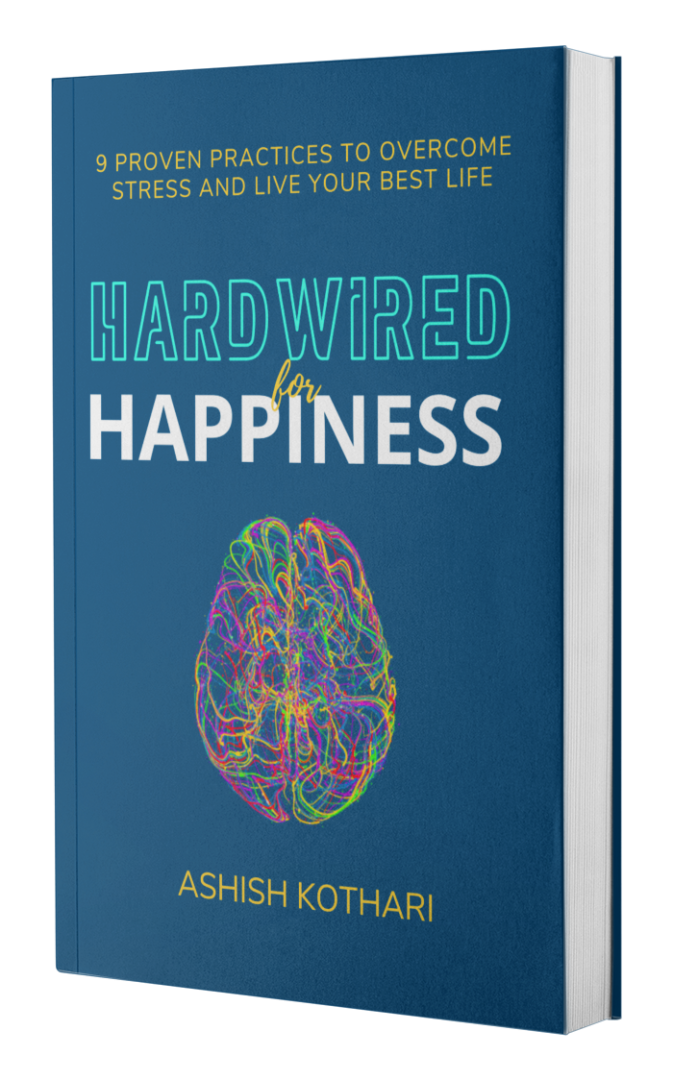
Many of us spend our lives searching for happiness but often end up feeling like it’s just out of reach. It’s a common problem in today’s fast-paced world, but we at HAPPINESS SQUAD understand that it’s something we cultivate from within, not something we chase.
In this article, Ashish Kothari and Alphonsus Obayuwana, Founder & CEO of Triple-H Project LLC, unpack the happiness formula, understanding the elements that truly makes us happy, and how to get there.
“When we don’t have hope, it’s hard to take action. Without hope, suffering can lead to depression. But if we suffer with hope, it can lead to positive action.”
– Ashish Kothari
The happiness formula
How do we know how happy we are? Without a tangible way to measure it, understanding our happiness can be confusing, and our efforts to make happiness our competitive edge can feel like shooting in the dark.
Alphonsus shares a powerful and game-changing formula: “hope over hunger equals happiness.” This happiness formula allows us to determine and quantify happiness subjectively and quantitatively. This simple equation helps us differentiate and identify individuals across a spectrum from languishing to flourishing.

Ashish emphasizes that by using this formula, leaders can support their people to live happier lives by increasing hope and solving their hunger. However, we must first define our ‘hope’ and ‘hunger.’ By discussing these concepts, we can better understand happiness and enhance it by balancing these two elements.
Five sources of human hope
We all need hope to keep going, but what exactly feeds this hope? Alphonsus reveals that some people define hope as money, family, children, a good job, a home, and a good future. Hope refers to the positive aspects of our lives, the sources of optimism, and our aspirations. Alphonsus highlights that there are five sources of human hope:
- Intrinsic assets – These intrinsic assets refer to personal virtues, strengths, and attributes inherent to an individual–things that make you, you!
- Human family assets – This aspect underscores the importance of support, love, empathy, and sympathy from family, friends, and colleagues.
- Economic assets – This emphasizes not necessarily wealth but a sense of material sufficiency and financial stability. Ashish also engages with this idea, exploring how economic security could also mean the perception of having enough.
- Educational assets encompass intellectual pursuits, curiosity, and an understanding of one’s environment and personal situation. Ashish recognizes this source as vital for personal growth and empowerment because it contributes to a person’s hope through knowledge and skills.
- Spiritual assets – Alphonsus refers to spiritual assets as a key source of hope. This dimension involves the benefits of spiritual beliefs and practices.

Sometimes we’re so busy that we forget to look after the things that give us hope. Ashish emphasizes that these aspects are crucial in shaping our overall well-being and perspective on life. To cultivate happiness, one should nurture and fulfill the sources of hope while also recognizing and addressing the inherent human hunger.
Five inborn human hunger
It’s hard to be happy if we’re not meeting our basic needs, but we often don’t even realize what these are. Alphonsus calls this human hunger. According to him, hunger is a compelling desire that can be the source of your negative emotions. It represents our innate, deep-rooted needs. They are not learned; they are congenital.

Alphonsus identifies five inborn human hungers:
- Inclusion and acknowledgment – This hunger represents our desire to be part of something and to be recognized and valued within that group.
- Intimacy and trusted companionship – This hunger speaks to our need for close, personal relationships and emotional connections. It’s about having people with whom we can share deep, trusting relationships.
- Food and comfort – This is a more fundamental hunger, referring to our basic needs for nourishment and physical well-being. It also extends to the need for comfort and a sense of safety.
- Information and answers – This hunger reflects our innate curiosity and desire to seek knowledge, learn new things, and find answers to our questions about the world.
- Continuity and certainty – This represents our need for stability, predictability, and control over our lives.
Ashish highlights that hunger goes beyond physical needs. Everything we do is in response to these five hungers, and it’s a trait we carry throughout our lives.
“If we identify what’s missing in our lives and concentrate on those areas, we can collectively become happier.”
– Ashish Kothari
The relationship between hope, hunger, and happiness
Hope, hunger, and happiness are closely intertwined, and the key to real happiness lies in balancing our hope while addressing our innate hunger. Alphonsus reveals that the five sources of human hope were directly related to the triggers of happiness. This means that the same elements that build our sense of hope can directly influence our happiness.
On the other hand, the inborn hunger, when unmet, can create a lack of happiness. This implies that while hope is about building positive aspects in our lives, addressing our fundamental hunger is crucial in preventing or alleviating unhappiness.
Five triggers of happiness
We wander through life, sometimes unsure of what makes us truly happy. Happiness isn’t just a random feeling but can be sparked by specific triggers in our lives. Alphonsus breaks these five triggers down:

- Achievements and accomplishments – This trigger is about the joy and satisfaction that come from achieving goals, whether they are personal, professional, or academic.
- Advancement in human connection – Strengthening bonds, forming new relationships, or reconnecting with others can significantly boost our sense of happiness.
- Increasing income and personal comfort – While money itself is not a direct source of happiness, the security and opportunities it provides can lead to an increase in well-being.
- New knowledge and skills – This refers to the happiness of learning new things, developing skills, and intellectual growth.
- Pleasant spiritual experiences – Engaging in spiritual practices, experiencing a sense of connection with a higher power, or participating in religious events can bring profound joy and fulfillment.
By seeking these triggers in our daily lives, we can orient our journey toward more fulfilling and happier experiences.
“We all want to be happier, but there’s no way to measure happiness. Happiness is an individual thing, what you face every day. That’s why we measure the ratio between your positive emotions (hope) and your negative emotions (hunger). That’s what the Happiness Formula is all about.”
– Alphonsus Obayuwana
Conclusion
Cultivating real happiness is like putting together a puzzle. It’s about understanding our hopes and hunger and what truly triggers our joy. As we embrace these lessons and apply them to our lives, we edge closer to realizing a more contented, fulfilled, and genuinely happy existence.
In this article, Ashish Kothari and Alphonsus Obayuwana, Founder & CEO of Triple-H Project LLC, unpack the happiness formula, understanding the elements that truly make us happy, and how to get there.
Learn more about Alphonsus at his LinkedIn.
Listen to the podcast with Ashish and Alphonsus below.
Access and subscribe to all of the episodes of the Flourishing Edge Podcast here.
Visit the REWIRE Program powered up by the HAPPINESS SQUAD Community and experience your shift within your 30-day risk-free trial today. Cultivate your Self-Awareness, Gratitude, Purpose, Community, and personal growth more through the 9 Hardwired for Happiness practices. Integrate simple and proven micro-practices grounded in the science of happiness and neuroscience of habit formation in 5 minutes a day.
Make Flourishing Your Competitive Edge.


